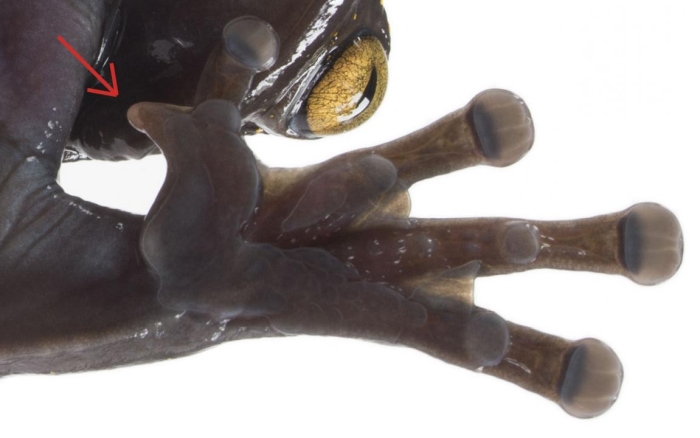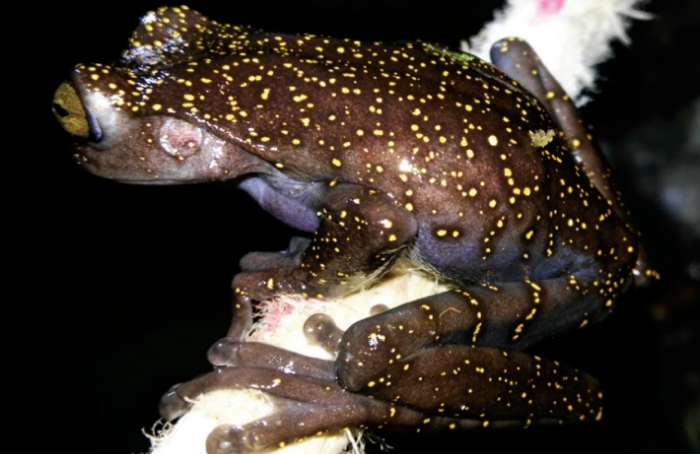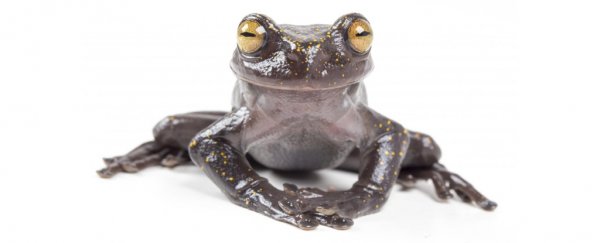The Cordillera del Cóndor between Ecuador and Peru is positively lush with life, but due to the mountain range's inaccessibility and decades of border disputes, it's only been in recent years that scientists have been able to get there to check it all out.
They have been making absolutely amazing discoveries - the most recent of which is an adorable, yet very strange, treefrog, found on the slopes of a flat-top or tabletop mountain at altitudes over 2,000 metres (6,562 feet).
And what magnificent frogs they are - dark-hued, speckled like a skin of golden stars to produce camouflage amidst the damp foliage, in some individuals striped like a tiger.
In addition, their front feet have an unusual feature - a claw-like structure at the base of the thumb, the function of which is unknown. It could be used as protection against predators, or perhaps used as a weapon in fights between males.
 (Gustavo Pazmiño, BIOWEB Ecuador/CC BY 4.0)
(Gustavo Pazmiño, BIOWEB Ecuador/CC BY 4.0)
They were closely examined by researchers led by Santiago R. Ron at the Catholic University of Ecuador, who conducted both morphological observations and genetic testing to determine that the frog was indeed a new species.

They named it Hyloscirtus hillisi - the Hillisi torrent frog - to honour David Hillis, who discovered three species in the Hyloscirtus genus in Ecuador in the 1980s.
Reaching the frogs was not an easy trek.
"To reach the tabletop, we walked two days along a steep terrain. Then, between sweat and exhaustion, we arrived to the tabletop where we found a dwarf forest," said biologist Alex Achig of the Central University of Ecuador, who attended the field trip, but did not participate in the paper.
"The rivers had blackwater and the frogs were sitting along them, on branches of brown shrubs similar in colour to the frogs' own. The frogs were difficult to find, because they blended with their background."
 (Diego Almeida/ZooKeys)
(Diego Almeida/ZooKeys)
Yet, although the team, containing experience herpetologists, searched thoroughly, they could only find two habitats where the frogs live - one with tadpoles and juveniles, and one with a small number of adults and one subadult.
Because of the small number of frogs that could be discovered, and because mining in the region has already impacted amphibian populations, the researchers believe the newly discovered Hillisi torrent frog should enter the annals as Critically Endangered.
The frog has been described in the journal ZooKeys.
